
Source: © ValuepPress Co., Ltd.
Move over Amabie, Japan’s list of virus-fighting “prophetic creatures” is growing
- Tags:
- Amabie / Kamiikehime / prophesy / prophetic creature / Yogennotori
Related Article
-
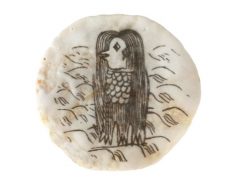
Japan’s anti-plague demon turned into pandemic-fighting rice cracker
-
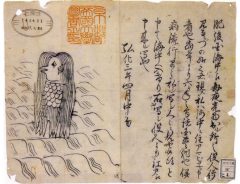
Can sickness-fighting monster Amabie defeat COVID-19 from outer space?
-
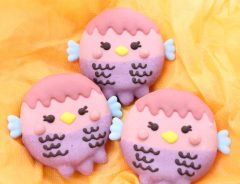
Get your hands on a disease-fighting Amabie monster donut
-
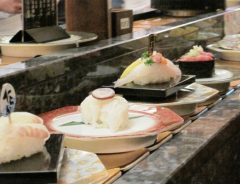
Sushi restaurant serves up shrimp with anti-plague demon’s blessing
-

Japanese anti-plague demon Amabie now has its own pudding
-
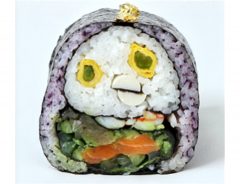
This ehomaki roll from Daimaru features an Amabie in every single slice!


Although Japan seems to have weathered the worst of the coronavirus pandemic, at least in its first wave, many here are still understandably cautious and wary about the ongoing threat.
Meanwhile, ever since March, a half-fish half-human creature with long hair and a scaly body called Amabie アマビエ has been adopted as the nation's unofficial mascot to symbolize the fight against the invisible threat.
Source unknown. Public domain
As we explained earlier, legend has it the Amabie first appeared in the water off the coast of Kumamoto, where it made predictions of a bountiful harvest, and before departing said "If an epidemic ever spreads, draw a picture of me and show it to everyone."
Since it was rediscovered and promoted online, Amabie has become a recognizable presence, inspiring everything from rice crackers, to donuts, wagashi sweets, pudding and even beer.
Prefectures assert their local identity
At first, Amabie seemed to be the only virus-fighting creature in Japan. But since its emergence, and perhaps in reaction to its seemingly pan-national adoption, some prefectures sought to mine their own local history to come up a "competitor" to rally around.
Let's take a look at two examples: the Kamiikehime from Shizuoka Prefecture and the Yogennotori from Yamanashi Prefecture.
Kamiikehime: Princess of God Lake
According to the Asahi Shimbun, some 200 years ago in the late Edo period, when there was an outbreak of cholera in Japan, an influential man in the fishing business in the town of Heda 戸田 had a woodblock print made showing a fantastic creature which emerged from a lake, saying: "Those without virtue shall expire (of cholera) overmorrow. Copy my image and display it, lest you suffer the same fate." The print was recently re-discovered in the Historical Documents Archive of Numazu City and, following Amabie's example, was revived to help fight Japan's new plague.
The name Kamiikehime 神池姫 or カミイケヒメ comes from Kamiike 神池 ("God lake"), the name of an actual lake in current Shizuoka Prefecture, and hime 姫, meaning princess.
Said to be over 34 feet long, Kamiikehime has the head of a woman, the body of a fish, and antlers on its head.
Shizuoka locals, particularly in Heda and Numazu, where the print was found, are drumming up support for Kamiikehime, with the Numazu Design Center leading the charge. They have created an information portal site, and have issued a challenge for people to submit illustrations of the beneficial beast with the hashtag #カミイケヒメチャレンジ, some examples of which we've posted below:
The Shunyoso Yamaya hostel and restaurant posted this on their door:
Shizuoka-born manga artist Makoto Kubota had this interpretation:
To see many more, you can visit the Kamiikehime portal and scroll down to see all the submissions. You can even upload your own.
Yogennotori
A bird creature which came to be known as Yogennotori 予言の鳥 (literally, "prophesy bird"), first appeared in the 1858 records on the cholera plague by a town official by the name of Kisaemon 喜左衛門 in Ichikawa, now Shizuoka Prefecture. According to the record, the bird appeared in December of the previous year in the Hakusan mountains and spoke the following words: "In August and September of next year, 9 out of 10 people in the world will die. If you wish to escape this calamity, worship my image morning and night."
The bird has two heads, one black and one white, but no descriptions of its size were recorded.
Image from the records, the rights to which are currently owned by the Yamanashi Prefectural Museum© Sourcenext Co., Ltd.
Illustrations of the Yogennotori have been popular on Twitter.
In addition to Kamiikehime and Yogennotori, there are other so-called 予言獣 yogenjū (prophetic creatures) such as the Himeuo 姫魚 ("princess fish") in Nagasaki Prefecture, the Kutabe クタベ in Toyama Prefecture, and many more.
With so many creatures joining the fight against the coronavirus pandemic, the opportunities for artists as well as businesses to create products in their likeness are increasing. And that potentially makes everyone happy, even if you don't believe in the power of the prophetic creatures which inspired them.